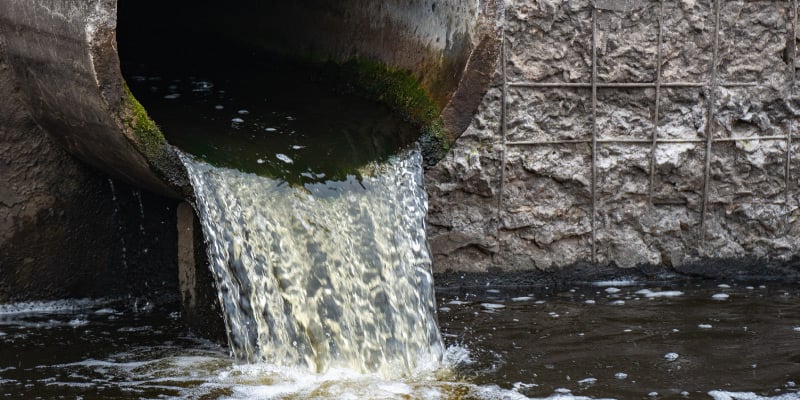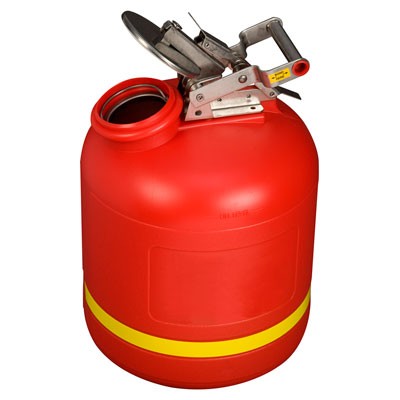Industrial Wastewater Treatment: Personalized Solutions for Complicated Wastewater Challenges
Industrial Wastewater Treatment: Personalized Solutions for Complicated Wastewater Challenges
Blog Article
Understanding the Comprehensive Process of Liquid Garbage Disposal: Finest Practices and Environmental Impact Factors To Consider
The administration of liquid garbage disposal is a complex issue that calls for a thorough understanding of various best techniques and their connected environmental impacts. From the types of fluid waste generated to the approaches used for collection, treatment, and final disposal, each action plays a critical function in securing environments and public health and wellness. As regulative criteria develop and innovation developments, the discussion around these procedures becomes progressively pertinent. What implications do these adjustments hold for future sustainability efforts, and exactly how can stakeholders make certain that they are effectively resolved?
Kinds Of Fluid Waste
Understanding the numerous kinds of fluid waste is important for effective monitoring and disposal practices. Liquid waste can be generally classified into several kinds, each calling for special handling and therapy approaches.
Industrial liquid waste usually contains dangerous materials, including hefty steels, solvents, and chemicals, generated throughout making procedures. These wastes demand stringent governing compliance to safeguard human health and the environment. Domestic liquid waste primarily describes wastewater generated from homes, including sewage and greywater, which, although much less toxic, can still pose considerable risks if improperly taken care of.
Agricultural fluid waste, consisting of overflow from ranches, usually contains fertilizers and pesticides that can cause environmental deterioration otherwise treated appropriately. Clinical fluid waste, created from medical care facilities, includes contaminated fluids such as bodily liquids and chemicals, needing specialized disposal methods to stop infection and ecological contamination.
Lastly, oil and grease waste, normally produced by dining establishments and vehicle sectors, can trigger extreme obstructions in drain systems otherwise taken care of effectively. Understanding these categories facilitates targeted strategies for treatment, compliance with policies, and reliable disposal methods, eventually advertising ecological sustainability and public health security.

Collection Approaches
Effective collection techniques are essential for the correct monitoring of fluid waste, making certain that it is gathered securely and successfully prior to therapy or disposal. Numerous strategies are utilized depending upon the sort of liquid waste produced, the volume, and the certain qualities of the waste.
One typical method is making use of dedicated collection tanks or sumps, which are made to record liquid waste at the source. These systems commonly integrate pumps that help with the transfer of waste to larger storage containers or therapy facilities. Furthermore, mobile collection devices outfitted with vacuum cleaner innovation are employed in scenarios where waste is created intermittently or in hard-to-reach areas.
For industrial setups, closed-loop systems can successfully decrease leakages and spills, enabling the healing and reuse of fluid waste. It is additionally important to educate employees on appropriate collection protocols to minimize risks connected with hazardous compounds.
Furthermore, applying regular maintenance routines for collection tools makes sure optimal efficiency and security. The assimilation of innovative surveillance systems can improve collection performance by offering real-time data on waste levels and possible risks. On the whole, efficient collection techniques are fundamental to sustainable fluid waste monitoring techniques.
Therapy Processes
Treatment procedures play a vital duty in the administration of liquid waste, transforming potentially hazardous products right into multiple-use resources or safe effluents - liquid waste disposal. These processes can be extensively categorized right into physical, chemical, and organic techniques, each customized to attend to particular contaminants existing in the waste stream
Physical therapy methods, such as sedimentation and purification, work by getting rid of suspended solids and particulate issue. These methods are frequently the very first step in the therapy chain, successfully decreasing the lots on subsequent processes. Chemical therapies include using reagents to counteract harmful materials, speed up heavy metals, or oxidize organic contaminants, therefore improving the security of the effluent.
Organic therapy processes, including activated sludge systems and anaerobic food digestion, profit from the all-natural abilities of microorganisms to deteriorate organic matter. These techniques are specifically effective for wastewater consisting of naturally degradable pollutants. Advanced therapy technologies, such as membrane layer purification and progressed oxidation processes, are significantly employed to achieve greater degrees of purification.
Including a combination of these treatment methods not just makes sure compliance with regulative requirements yet also advertises environmental sustainability by recovering valuable sources from fluid waste.
Disposal Options
Exactly how can companies ensure the risk-free and accountable disposal of fluid waste? Effective disposal choices are crucial for protecting public health and wellness and the environment. The main approaches consist of land disposal, therapy, and incineration complied with by discharge right into community wastewater systems.
Land disposal includes the mindful control of liquid waste in marked land fills, ensuring that it does not leach right into surrounding dirt or water. Incineration, on the other hand, subjects fluid waste to heats, transforming it into ash and gases, which require proper filtering to decrease discharges. This technique is appropriate for contaminateds materials that can not be dealt with via standard ways.
In cases where fluid waste can be treated, companies might decide for biological or chemical therapy procedures to reduce the effects of damaging elements prior to releasing the dealt with effluent right into community systems. This path generally straightens with regulatory demands, making sure that the effluent satisfies safety requirements.
Eventually, companies have to conduct detailed assessments of each disposal alternative to determine its feasibility, taking into consideration aspects such as waste composition, regulative compliance, and prospective threats to health and the setting. By selecting appropriate disposal techniques, organizations can add to a responsible waste administration technique.
Ecological Influence
The ecological impact of fluid garbage disposal is an important factor to consider for companies looking for to decrease their eco-friendly footprint. Inappropriate disposal methods can cause substantial contamination of water sources, soil destruction, and adverse blog impacts on local ecosystems. For example, dangerous liquids can leach into groundwater, presenting threats to alcohol consumption water products and water life. Additionally, the discharge of untreated or inadequately treated waste into surface waters can result in eutrophication, leading to oxygen deficiency and the subsequent death of fish and other microorganisms.

To alleviate these impacts, organizations need to adopt best practices such as carrying out rigorous waste therapy procedures, promoting recycling and reuse, and adhering to straight from the source regulative standards. By taking a proactive technique to fluid waste administration, entities can significantly decrease their ecological footprint while supporting lasting growth objectives. Ultimately, a thorough understanding of the ecological effects related to fluid garbage disposal is vital for educated decision-making and liable stewardship of natural deposits.
Verdict
Reliable administration of fluid waste is essential for protecting ecological stability and public health and wellness. Eventually, a detailed understanding of fluid waste disposal not just mitigates environmental effects however also promotes a commitment to responsible resource administration and environmental stewardship.
The administration of liquid waste disposal is a multifaceted issue that calls for a thorough understanding of different finest practices and their associated ecological impacts. From the types of fluid waste generated to the approaches employed for collection, treatment, and last disposal, each step plays a crucial function in safeguarding ecological communities and public health and wellness.The ecological influence of liquid waste disposal is a critical factor to consider for companies looking for to decrease their ecological footprint. Eventually, a detailed understanding of the environmental effects associated with fluid waste disposal is crucial for informed decision-making and responsible stewardship of all-natural resources.
Inevitably, an extensive understanding of fluid waste disposal not only alleviates environmental impacts but also promotes a commitment YOURURL.com to responsible resource management and ecological stewardship.
Report this page